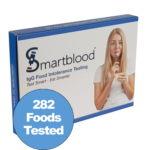When you realise something you’re eating isn’t agreeing with you, the next logical step is to remove it from your diet. But sometimes, that’s easier said than done.
Our trigger foods can often be some of our most favourite things to eat, making them very hard to resist. They can also be ingredients which feature heavily in meals, and prepared products, making it difficult to avoid them.
If you’re trying to make changes to your diet to avoid a problem food, here are some of our top tips.
Seek out support
When you first start out making changes to your diet, it can be daunting. Finding support from others who are going through the same journey can be really helpful, as well as a good source of motivation and inspiration.
Look out for Free From groups on social media, as well as helpful blogs full of advice and recipes to help keep you on track.
Find Free From alternatives
It used to be the case that finding Free From products was a real mission. Now, thanks to more diverse diets, the rise of veganism and an increased understanding of allergy and intolerance, there is a lot more choice on supermarket shelves.
Most stores now carry comprehensive Free From ranges, catering to those avoiding the more common trigger foods, such as egg, wheat, gluten and dairy, as well as meat free alternatives.
Don’t nix the nutrients
When we’re trying to avoid a trigger food, it can seem like the easiest thing to do is to simply cut the food group out entirely, but this can be detrimental when it comes to maintaining a balanced diet.
Similarly, we can often overlook the nutrients a certain food gives us and forget to find alternative sources to keep us healthy.
For example, if you discover that cows’ milk causes you problems, you’ll likely look to avoid milk, yoghurt and cheese. But in doing so, you could be missing out on important sources of calcium. Make sure that you consider alternative ways to factor those nutrients into your diet. In the case of calcium, with nuts, spinach, almond milk, fortified cereals and orange juice or sardines.
Don’t deprive yourself
Cutting out your favourite foods cold turkey isn’t great for your motivation and could lead to you craving that trigger food more than ever. Instead, try to find similar substitutes that satisfy. There’s a wide range of wheat, gluten and dairy free alternatives out there to give you a good stand in for your favourite foods.
If your trigger food is something a little less mainstream, don’t despair. There’s usually a way to replicate the taste and textures of your favourite foods, be it through Free From products or clever swaps with ingredients that have a similar flavour profile.
Learn your labels
When it comes to labels and food intolerances, we tend to know the more obvious ingredients to look out for.
If you’re trying to avoid milk, you look for ‘cows’ milk’. But what about the other names? Milk can also be listed as lactose, whey, casein, lactulose, lactoglobulin and hydrolysates to name a few!
Most allergens, or ingredients in general, have a range of different names, depending on how they’ve been processed and their particular use in a product. If you’re trying to avoid a particular food, it may be worth swatting up on its pseudonyms.
Talk to a nutritionist
Maintaining a balanced, healthy diet when you’re also trying to avoid trigger foods isn’t easy. There’s lots to remember and, when we’re busy, it’s easy to forget what we should be looking for. This is why talking with a trained nutritionist can be particularly helpful, guiding you towards the optimum diet for you.
A good nutritionist can suggest helpful alternatives that balance the nutrition you need with the types of foods and flavours you love. They can also help to suggest foods that can support you in your health and wellbeing goals.
Could you have a food intolerance?
Food intolerances, which can occur when your body’s immune system mistakes a food protein as a threat, releasing antibodies to fight it, can cause a host of inflammation.
Headaches, brain fog, IBS, bloating, low mood, and joint pain are all reactions that can result from a food intolerance, as well as skin complaints like eczema or acne.
If some of these complaints look familiar, and you haven’t been able to work out the cause, it might be time to take a closer look at your diet.
Take control of your diet
Getting to the bottom of a food intolerance can be frustrating. A common recommendation is the elimination diet, where you remove one food at a time for a few weeks to see how you feel. But this process can take a long time. And, although many of us commonly react to a few different ingredients, the elimination diet is often abandoned when the first trigger food is found, leaving an incomplete picture of what’s causing the problem.
Get answers faster with Smartblood
When it comes to food intolerance testing, it’s important to do your research and choose a reputable laboratory testing company.
At Smartblood, we offer a comprehensive test to help you take control of your diet quickly and discover your own trigger foods.
Our home-to-laboratory service gives you fast, accurate results that pinpoint exactly which foods you are reacting to. Tests are completed in our accredited laboratory by trained experts, with clear, easy to understand results sent to you via email within three days.
Dedicated nutritional support
Importantly, our tests include a telephone consultation with our BANT registered Nutritional Therapist. This additional support is there to help you understand your results and put a plan together to make safe, sustainable changes to optimise your diet.




